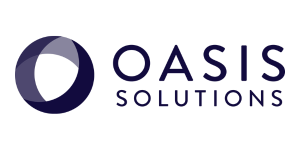In recent years the business environment has forced CEOs to focus the majority of their attention on revenues and profitability. They must be aware of what competitors are doing— and today competitors can be anywhere in the world. In additional, executives are watching the government closely for indications of changes to regulations and tax issues.
The recent economic challenges have forced executives to reevaluate workforce management issues. Between reducing labor costs, cross-training employees and keeping employee morale up, many leaders have found their organizations less flexible than they would like.
Workforce management has a profound and direct impact on achieving profitability objectives. Today, labor costs (compensation and benefits) account for nearly one-third of operating costs. Aligning workforce management goals and corporate objectives is one of the best ways to set HR strategies. Keeping a close eye on how HR programs and decisions will impact the bottom line is now a main concern for all executives. To create dramatic improvement in financial performance many CEOs are aligning labor costs with the quality of the workforce.
HR leaders should be prepared to step outside the human resources arena and view the business from all angles. By reviewing items like: What does your company do, how much does it cost to deliver products, how does the competition do it and who are your customers, HR is able to add strategic value. HR leaders should focus on developing a workforce that supports the company’s goals. In this way the executive team will be able to stay ahead of HR issues by finding answers before a question is asked. In light of this information, are today’s HR departments fulfilling their mission? According to HR professionals, no.
Executives often avoid the day-today details of human resources issues preferring instead to take a broader perspective. Strategic executive priorities include recruiting and staffing, turnover and succession, compensation and benefits. These are the most expensive functions of HR.
Most companies aim to minimize employee turnover. Recently, there have been many conditions that have required employee layoffs. Some companies make it a policy to routinely turnover the lowest performing employees for strategic or morale reasons. As a general rule, employee turnover is very expensive for an organization. Layoffs and resignations disrupt team momentum, slow production and can lower morale. Companies run the risk of losing some or all of the departing employees’ job knowledge. On average it costs between 1 ½ and 3 times an employee’s annual salary to recruit, hire and train a replacement.
In order to prepare for changes in the workforce, executives need help from HR. Modeling scenarios for changes, identifying worst performers, creating career development and retention plans and planning succession for mission-critical positions in the event of an unexpected departure are common changes and HR should have policies in place to deal with these situations.
In the future, smooth and reliable communication between company executives and HR leaders will be critical to a company’s success. Now is the time to review your company to see if your organization has already achieved refined communications processes, innovate your strategies and adapt for the future.
The right human resource management software can help your organization develop strategic initiatives and manage your workforce. Oasis Solutions Group can help you decide what HR/Payroll software solutions is right for your organization. Contact us for more information about how we can help with software selection, training, support, service and development.


